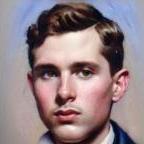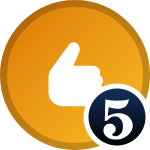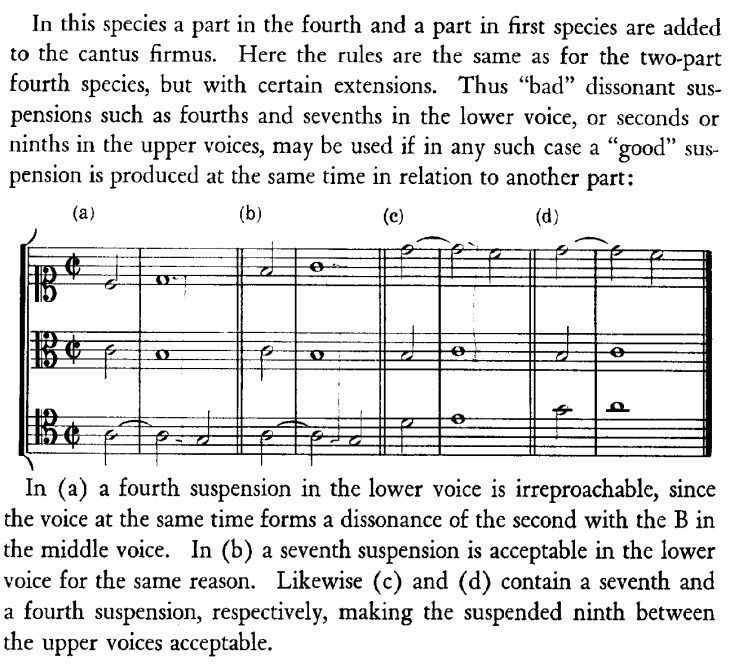
Fermata
Old Members-
Posts
56 -
Joined
-
Days Won
3
Fermata last won the day on May 22
Fermata had the most liked content!
About Fermata

Profile Information
-
Gender
NA
Recent Profile Visitors
4,257 profile views
Fermata's Achievements
-
Fugue in A minor(From the Langloz Manuscript)
Fermata replied to Sonata_5's topic in Piano Music, Solo Keyboard
There's improvement, but some dissonances are still not well resolved. See below for a few ideas—though you may want to reduce movement in quavers to better align with the keyboard style. EDIT: added a 2nd version -
Fugue in A minor(From the Langloz Manuscript)
Fermata replied to Sonata_5's topic in Piano Music, Solo Keyboard
It has parallel 8ves between mm. 4-5, 10-11 & in m. 13 between the bass and the uppermost voice. In m. 12 the last note of the middle voice should be an E crotchet because the G also appears as a passing dissonance in the bass. The tail of the subject in m. 5 should lead to the same countermelody introduced in mm. 2-3. In m. 7 you wrote a 6 4 chord on the 2nd beat; there should be a D in the middle voice according to the figures given. -
Handel partimento fugue in g Dorian
Fermata replied to Sonata_5's topic in Piano Music, Solo Keyboard
I don't think this fugue was meant to be strictly in four voices. It's nigh impossible to realize measures 13–15 in four parts with the given figures without resorting to playing around with the arrangement of the voices in order to conceal bad parallels. (Had Händel written out 7 43 instead of 7 6, it'd be much more feasible.) I'd suggest you try to realize this exercise using only three voices. -
Handel partimento fugue in g Dorian
Fermata replied to Sonata_5's topic in Piano Music, Solo Keyboard
Most of your realization is quite tasteful and pretty. In mm. 10-11, there are parallel octaves (G-F) between the bass and the alto; in m. 11, there's an unprepared 6 4 chord on the 2nd beat. In mm. 13-15, the harmonies do not correspond to the figuring, as there should be a 6 chord on every 2nd beat (you have 6 4 chords instead). Also, in mm. 14-15, on the 1st beat, you approach the 9th interval with the lower voice moving down a step. Are you sure about the G in the bass in measure 16? It sounds strange. Isn't that an A in the original exercise? -
Yes, it seems so, as far as Renaissance counterpoint is concerned. But it's definitely a big no-no in the tonal counterpoint of the later centuries.
-
There is in fact a passage in Jeppesen's book on cp which, among other things, deals with suspended 7ths in the lower voice resolving to the 8ve under certain conditions. It's *not* exactly the same situation as in the Ockeghem mass, but quite similar nevertheless. See example b) below.
-
Btw. I checked the PDF of the score available on cpdl. Maybe I'm too tired at the end of the day or blind, but I don't see anything suspicious in m. 171 of the Credo that matches your description. Did you mean m. 170 instead?
-
I wanted to know what examples you have, as I couldn't imagine under what circumstances this voice-leading problem could occur in actual compositions. Reading your initial post, I first thought of Palestrina's technique of counterpoint (as well as its bastardized version we nowadays call Fuxian counterpoint), as this is what 19th-century theorists generally referred to as 'old style.' Thanks for clarifying that you actually mean pre-Palestrina style. The rules of counterpoint were not yet as developed and unified during Ockeghem's time; voice leading was more free in this regard. Jeppesen's book might shed some light on the matter you inquired about, I’ll have to look it up.
-
I'm curious, what examples have you found?
-
Fugue in a minor
Fermata replied to Fermata's topic in Incomplete Works; Writer's Block and Suggestions
Hi, and thanks for your comments! Yes, I use Musescore 3. Alas, that's the only version that runs on my PC, so switching to more advanced applications is not an option at the moment. It's very cumbersome to add articulations and such this way (like playing around with those hidden tempo changes); there is, in fact, a plugin for changing the note duration, but one has to set each note separately, which is an awful lot of work. I really don't know what other options I have in MS 3. Most of the fugue was worked out on paper in an SATB open score format with no particular instruments in my mind (I chose those strings for the audio rendition because that soundfont is amongst the least horrible I have). Actually, what you suggest is a very good idea! One thing that makes me think is what role to give the double bass before the dominant pedal. Supporting the cello throughout might be a bit too much sometimes. Yes, exactly, those form the kernel of the episodes. -
A four-part tonal fugue in the instrumental style, composed upon a given subject. I made the first drafts about 12 years ago when I was still in university, but I hadn't worked on them until yesterday. I have mixed feelings about the result. (The slurs, as usual in my own counterpoint exercises, are meant to indicate various phrases and motifs and should not be taken as articulation.)
-
I've marked the errors with red (see the score below). It shouldn't take much time to revise them 🙂 Those recommendations that Henry suggested above should also be incorporated to get the most out of this piece.
- 4 replies
-
- counterpoint
- composition
-
(and 1 more)
Tagged with:
-
It's a huge improvement compared to the previous piece! Can you update the PDF so it matches the audio?
- 4 replies
-
- counterpoint
- composition
-
(and 1 more)
Tagged with:
-
Thanks for the comments! It was originally composed in SATB open score format with no particular instruments in mind. I was pondering whether to adapt it for a string quartet or piano, and eventually decided on the latter due to the character of the subject. If I had rewritten it for piano solo, I would have had to sacrifice some of the contrapuntal texture for the sake of playability. The two-piano solution seemed to be more 'safe'. Also, I tried to arrange the music in a way that the subject entries are alternately played by the two instruments. Thanks! In my opinion, composing developmental episodes is the hardest aspect of fugue writing (at least this is the part I spend the most time on); I'm glad you found them satisfactory. :-)
-
Revision of a fugue I wrote several months ago, transcribed here for two pianos. I found the subject to be somewhat challenging due to its chromatic nature. Had lots of fun with the stretti.











